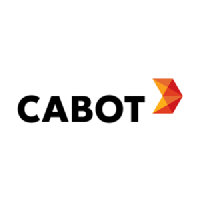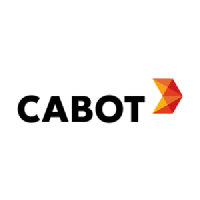
Cabot Corp
NYSE:CBT


| US |

|
Johnson & Johnson
NYSE:JNJ
|
Pharmaceuticals
|
| US |

|
Berkshire Hathaway Inc
NYSE:BRK.A
|
Financial Services
|
| US |

|
Bank of America Corp
NYSE:BAC
|
Banking
|
| US |

|
Mastercard Inc
NYSE:MA
|
Technology
|
| US |

|
UnitedHealth Group Inc
NYSE:UNH
|
Health Care
|
| US |

|
Exxon Mobil Corp
NYSE:XOM
|
Energy
|
| US |

|
Pfizer Inc
NYSE:PFE
|
Pharmaceuticals
|
| US |

|
Palantir Technologies Inc
NYSE:PLTR
|
Technology
|
| US |

|
Nike Inc
NYSE:NKE
|
Textiles, Apparel & Luxury Goods
|
| US |

|
Visa Inc
NYSE:V
|
Technology
|
| CN |

|
Alibaba Group Holding Ltd
NYSE:BABA
|
Retail
|
| US |

|
3M Co
NYSE:MMM
|
Industrial Conglomerates
|
| US |

|
JPMorgan Chase & Co
NYSE:JPM
|
Banking
|
| US |

|
Coca-Cola Co
NYSE:KO
|
Beverages
|
| US |

|
Walmart Inc
NYSE:WMT
|
Retail
|
| US |

|
Verizon Communications Inc
NYSE:VZ
|
Telecommunication
|
Utilize notes to systematically review your investment decisions. By reflecting on past outcomes, you can discern effective strategies and identify those that underperformed. This continuous feedback loop enables you to adapt and refine your approach, optimizing for future success.
Each note serves as a learning point, offering insights into your decision-making processes. Over time, you'll accumulate a personalized database of knowledge, enhancing your ability to make informed decisions quickly and effectively.
With a comprehensive record of your investment history at your fingertips, you can compare current opportunities against past experiences. This not only bolsters your confidence but also ensures that each decision is grounded in a well-documented rationale.
Do you really want to delete this note?
This action cannot be undone.

| 52 Week Range |
72.09
117
|
| Price Target |
|
We'll email you a reminder when the closing price reaches USD.
Choose the stock you wish to monitor with a price alert.

|
Johnson & Johnson
NYSE:JNJ
|
US |

|
Berkshire Hathaway Inc
NYSE:BRK.A
|
US |

|
Bank of America Corp
NYSE:BAC
|
US |

|
Mastercard Inc
NYSE:MA
|
US |

|
UnitedHealth Group Inc
NYSE:UNH
|
US |

|
Exxon Mobil Corp
NYSE:XOM
|
US |

|
Pfizer Inc
NYSE:PFE
|
US |

|
Palantir Technologies Inc
NYSE:PLTR
|
US |

|
Nike Inc
NYSE:NKE
|
US |

|
Visa Inc
NYSE:V
|
US |

|
Alibaba Group Holding Ltd
NYSE:BABA
|
CN |

|
3M Co
NYSE:MMM
|
US |

|
JPMorgan Chase & Co
NYSE:JPM
|
US |

|
Coca-Cola Co
NYSE:KO
|
US |

|
Walmart Inc
NYSE:WMT
|
US |

|
Verizon Communications Inc
NYSE:VZ
|
US |
This alert will be permanently deleted.
 Cabot Corp
Cabot Corp
Cabot Corp
Investor Relations
In the bustling corridors of chemical innovation, Cabot Corporation stands as a quintessential player, weaving a complex tapestry of specialty chemicals and performance materials that are integral to myriad industries. Founded in 1882, this Boston-based enterprise has grown from its early days of carbon black production to a global leader in solutions based on technology and innovation. Cabot's expansive portfolio includes carbon black, fumed silica, and activated carbon, each contributing to the company's robust market presence. These materials, while perhaps not tangible to the everyday consumer, are vital in enhancing the performance of products like tires, inks, cosmetics, and batteries. Through a combination of advanced manufacturing processes and a keen focus on sustainability, Cabot harnesses the properties of its materials to add significant value to customers, thus driving revenue growth.
Cabot's financial engine is powered by its ability to foster long-term partnerships within diverse industries, ensuring its products meet the evolving needs of its clients. By capitalizing on trends such as the push for sustainability and the rise in electric vehicle production, the company positions itself at the forefront of innovation. This adaptability not only fortifies its current market standing but also paves avenues for future growth. Revenue is gleaned from strategic segments that cater to varied industrial demands, allowing Cabot to remain resilient amid economic fluctuations. By entrenching itself as an indispensable partner in supply chains, Cabot continues to thrive, leveraging its expertise and global reach to maintain its status as a stalwart in the field of performance materials.

In the bustling corridors of chemical innovation, Cabot Corporation stands as a quintessential player, weaving a complex tapestry of specialty chemicals and performance materials that are integral to myriad industries. Founded in 1882, this Boston-based enterprise has grown from its early days of carbon black production to a global leader in solutions based on technology and innovation. Cabot's expansive portfolio includes carbon black, fumed silica, and activated carbon, each contributing to the company's robust market presence. These materials, while perhaps not tangible to the everyday consumer, are vital in enhancing the performance of products like tires, inks, cosmetics, and batteries. Through a combination of advanced manufacturing processes and a keen focus on sustainability, Cabot harnesses the properties of its materials to add significant value to customers, thus driving revenue growth.
Cabot's financial engine is powered by its ability to foster long-term partnerships within diverse industries, ensuring its products meet the evolving needs of its clients. By capitalizing on trends such as the push for sustainability and the rise in electric vehicle production, the company positions itself at the forefront of innovation. This adaptability not only fortifies its current market standing but also paves avenues for future growth. Revenue is gleaned from strategic segments that cater to varied industrial demands, allowing Cabot to remain resilient amid economic fluctuations. By entrenching itself as an indispensable partner in supply chains, Cabot continues to thrive, leveraging its expertise and global reach to maintain its status as a stalwart in the field of performance materials.





























 You don't have any saved screeners yet
You don't have any saved screeners yet
